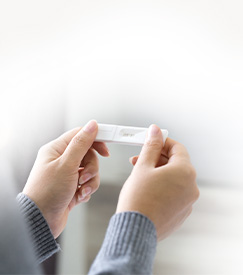 Adoption is a beautiful way to create a safe and giving home for a child in need of a family. It also offers parents purpose and love by starting a new family. The overwhelming majority of adoptions are success stories, but what happens when a parent struggles with bonding in adoption?
Adoption is a beautiful way to create a safe and giving home for a child in need of a family. It also offers parents purpose and love by starting a new family. The overwhelming majority of adoptions are success stories, but what happens when a parent struggles with bonding in adoption?
Bonding and Attachment: The Differences
Attachment is a word used by professionals to describe how a parent or child grows dependent on one another in an emotional way. This may sound much like what you think of bonding, but bonding when parenting involves physicality where attachment does not.
During pregnancy, mothers and children create bonding through physical and instinctive needs. The mother bonds in a longing to protect, while the child bonds out of a need to survive. Bonding and attachment are both necessary for proper child development during growth. While there is no physicality of pregnancy involved during the adoption process, there are ways to develop this desire.
Attachment Issues In Children
In some ways, it is easier to understand why children have a hard time attaching with adoptive parents than the other way around. This is especially true if the child is older. Before getting into issues with why parents have a hard time bonding with children, let’s look at why a child may have a hard time attaching with a new parent.
- Neglect or Abandonment Issues: Children who were neglected or abandoned by someone they trusted in can cause attachment disorders.
- Cultural Differences: Even within a single country like the U.S., people are raised differently across the country. This can cause animosity after adoption when the cultural differences are too much.
- Past Abuse: Abuse in one’s past plays a role in attachment problems. Children who experience abuse will be less willing to trust in someone else.
- Special Needs: Some children have special needs and cognitive issues that simply don’t allow for them to attach to their new parents.
Attachment Issues with Parents
Many parents are surprised when they find they experience attachment issues with their new child after years of trying to adopt. Some of the same reasons apply for parents as children. For example, an adult who has some of the same attachment issues in their childhood may have the same experience after an adoption. Without the physical bonding that happens between a mother and child during pregnancy, attachment takes a process to develop. Next, let’s see what a parent can do to create an attachment between them and the child they adopt.
Attaching With Your Adopted Child
The attachment process takes time to develop. Sometimes, parents and children find what they dreamed about for years is more challenging to attain than in their minds. The first step in creating a healthy relationship after the adoption is to show a child you can be trusted as a parent. Some parents may try to work on themselves first, but creating a safe place for the child to live and show you are there for them creates a space for you to grow your attachment. Parents tend to attach when they know they are needed. Even in adoption scenarios, a child’s need for a parent will break down many attachment issues out of instinct.
Little things like making sure all the child’s needs are met, hugs at bedtime, showing interest in projects, and the child’s future are essential ways to build trust. Once children know they can trust you, they will open up and show how much they need and appreciate you.
Often, attachment issues with a parent are due to the quick and large changes that take place in one’s life when adding a child to their home. After years of living without this human being in your life, you now have someone counting on you twenty-four hours a day. This situation creates stress in anyone’s life and affects almost all adoptions. Know that most attachment issues work themselves out over time as long as the parent has a focused plan on making it happen.






